Drift boats are one of the best things about fly fishing. Sure, wade anglers catch their fair share of fish, but those lucky guys floating downstream in their drift boats, sneaking one cast after another under overhanging tree limbs and behind midstream boulders, are having more fun than the proverbial kid in the candy store.
There’s nothing quite like the anticipation as you slip down a new stretch of water and pick out your next target. Everything in your world compresses into that one pregnant moment, your cast and drift your sole focus, and then time stops slow-dancing and lurches to a halt while you wait, poised, hair-triggered, aching for that strike that you know, you just know, has to come.
Then you’re sliding on downstream, either playing a fish or picking up your line and getting ready for your next cast, and life, in the form of time and space, expands to fill your consciousness. That, my friends, is a damn fine way to spend a day on the water.
I went through a stretch some years ago where I nearly lived in drift boats. I fished out of them, guided out of them, even ate and slept in them. My first boat was an old wooden job that leaked when I bought it and leaked even more after I’d owned it for a while. It was a pretty good boat despite the constant seepage, but it needed a lot more TLC than I was willing to give it. I eventually sold it to a weekend fisherman who was looking for a restoration project.
My next was a brand new Clackacraft; the kind of well-built, intelligently-designed fiberglass drift boat that really turns heads. The inside was clean — meaning that there wasn’t much in the way of hardware or clutter to catch your fly line — and it was basically bulletproof. You could jump into that boat wearing stream cleats or bounce it off every other rock in the river and you knew it was going to hold up and take the abuse. It was also a great fishing boat; stable, comfortable and easy to row. Which is why my next couple boats were also Clackas. They’re simply damn nice boats.
More Like This
I’m not in the market for a drift boat at the moment, but if I was there are a couple basic things I’d look for in my new boat. First off, I’d want a high side. The low sides that have become so popular over the last twenty years are great on big, gentle rivers like the Missouri and the Big Horn, and they sure handle well in the wind, but they’re not much for standing waves or rapids. And if I’m going to own a boat, I don’t want to worry that I’m going to sink the damn thing if I make a mistake or two in my dotage. I want to be able to float the occasional stretch of technical water and still concentrate on the fishing. A high side allows me to do that, whereas a low side doesn’t.
I’d also want a boat that rows well and tracks well. I’ve floated in boats that were heavy and sluggish, as well as boats that just couldn’t seem to hold a line, and I can tell you that they’re a hell of a lot more work than they’re worth. So how do you avoid picking out a clunker? Take it out for a test-float before you write your check. You’ll be glad you did.
Then there’s storage. I’ve seen some gorgeous wood boats — absolute top-of-the-line beauties — that didn’t have any dry storage on board. That’s a bad thing. I want someplace to keep my lunch, my rain gear, my extra clothes, my first aid kit and my life jackets; someplace that’s not going to be exposed to the weather or cause problems for my fly line.
As for materials — well, now things start getting a little complicated. Wood is great. It looks better than just about anything else and it’s an absolute dream to row. The only real issue with wood is maintenance. You’ve got to put a lot of time and elbow grease into a wood boat, and some folks would rather spend their free time fishing.
Aluminum is a no-no, at least to my mind. It’s way too noisy, and it tends to stick on rocks.
Fiberglass is the current industry standard with guides and other fly fishing pros. It’s durable and easy to maintain, and the best fiberglass boats are stable, comfortable and row surprisingly well.
Plastic, although it doesn’t have an incredible reputation at the moment, may be the trend of the future. It’s both light and extremely strong, and if it’s a good choice for whitewater kayaks, it stands to reason that it’s a good choice for drift boats.
So where would I look for my next boat? Well, I just reached out to a bunch of respected industry pros — folks who use drift boats regularly and know them inside and out — and a few names kept popping up. For those of you interested in traditional high-sided drift boats, take a long, hard look at both Boulder Boat Works and Clackacraft. If you’re more interested in a skiff or a pram, then Adipose Boatworks deserves your serious consideration.
One final bit of advice. If you’re going to pick up a boat for yourself, you’ll want to teach your friends and family to row. The one thing worse than not having a drift boat is getting stuck on the oars all day long while the bugs are hatching and the fish are looking up.





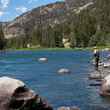

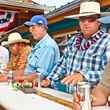




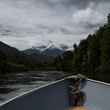



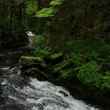




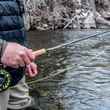
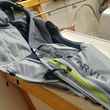



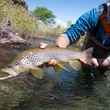


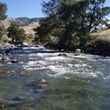
Comments
Derek Young replied on Permalink
And the growing trend of high-performance rafts? There are a couple worth mentioning but only one is designed from the floor up to meet the needs of guides and discerning anglers.
Mark York replied on Permalink
Todd, I have a 14 ft. Don Hill for sale $3000 obo. It's on the Bozeman Craig's List.
http://bozeman.craigslist.org/boa/5784416626.html
Mahogany drift boat fully restored with Sawyer oars and trailer. Bottom has two layers of fiberglass and epoxy with Coat-It over that. Petit Easypoxy paint. Good two person boat for the Yellowstone and Missouri. Call Ron 406-581-0096.
Fred Rickson replied on Permalink
Did multiple trips down the last 25 miles of the Deschutes River in Oregon. Four class four rapids, with multiple 45 degree side curled waves. Several in high-sided boats over 20 years, last few years in a low-sided Clackacraft; row downstream in a wind, or bail 10 gallons of water after each rapid. Exercise is good, and I vote for high sides on rough water.
Scott Snell replied on Permalink
I currently have my wood boat from 92, a 2012 Clacka ffb,a 2012 Pavati and two 14 foot NRS rafts with fishing frames. We run a fairly technical class three river, the East Outlet of the Kennebec in Maine. Rafts are sports cars great for low water but can handle anything, wood is beautiful and nice to row but high maintenance, the Clacka is a nice all around reasonably priced boat and then there's the Pavati. The Pavati is an extreamly light nimble aluminum Drift Boat with a plastic skin on the bottom and Kevlar rock guards, it rows a lot like a wood boat and Its built like a dump truck body (nearly indestructible). It is true that if you slam a rock it's a little louder tha the Clacka however you don't get the ugly sound of fiberglass being shredded. The Pavati can be plumbed for heat and I've even grilled on the bow! I would have to say it's nearly the perfect boat right down to doors in the sides for my "less than athletic clients". This is not any kind of sales pitch this is real world experience from a Master Maine Guide who has run drift boats since 1992 on a nasty, rocky little river...
Pages